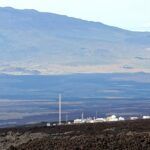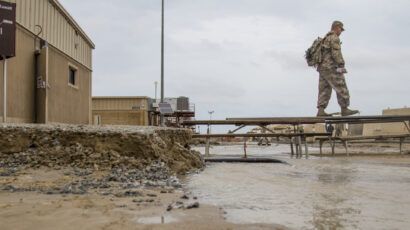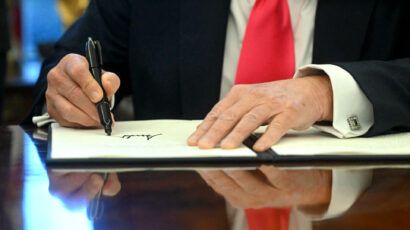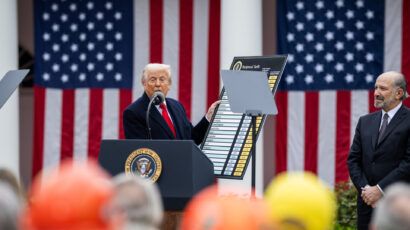Bringing law to the sea: safeguarding the naval nuclear fuel cycle
By Sébastien Philippe | September 4, 2014
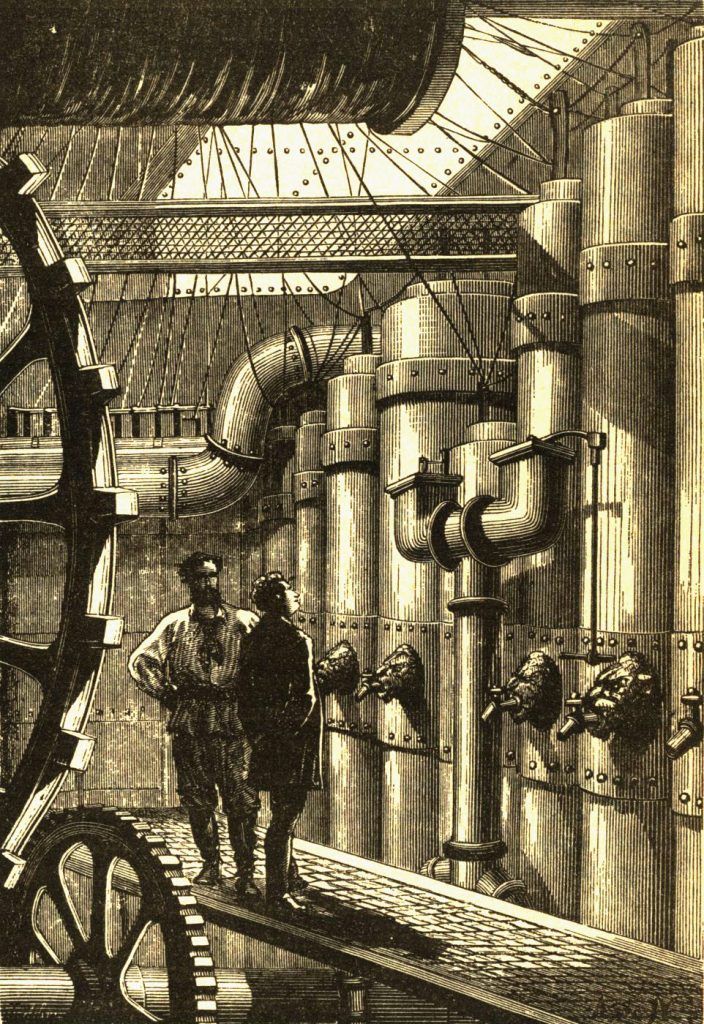
In 1870, Jules Verne published Twenty Thousand Leagues Under the Sea, the story of Captain Nemo and his submersible ship, the Nautilus. This science fiction novel had a profound impact, inspiring generations of naval engineers and officers. Nemo’s major technological breakthrough was the design and construction of a ship equipped with electrical power, capable of sailing freely underwater while covering vast distances at an amazing 50 nautical miles an hour. Verne’s vision came true when the United States launched the USS Nautilus in January 1954 under the supervision of Capt. and later Adm. Hyman G. Rickover. Revolutionary—but imaginary—sodium-mercury batteries powered Nemo’s vessel; Rickover’s Nautilus was fueled with weapons-grade highly enriched uranium, or HEU.
Against the backdrop of the Cold War, the navies of the Soviet Union, the United Kingdom, France, and China followed suit, and the first generation of naval nuclear technology spread quickly, through cooperation or copycatting. Together, these five countries built hundreds of nuclear submarines and dozens of nuclear surface ships. While the number of deployed nuclear reactors at sea dropped with the Soviet Union’s fall, they still represent 20 percent of all operational nuclear reactors worldwide today.
Non-nuclear weapon states also sought to take nuclear power to sea. Germany and Japan developed naval reactors in the 1960s but limited their application to civilian merchant ships only and eventually gave up the effort. Now, several more non-nuclear weapon states have sought to get on board and develop naval nuclear propulsion—but this time for military purposes. In 2013, the president of Brazil, Dilma Rousseff, declared that her nation was “entering the select club of countries with nuclear submarines.” Brazil is currently building its first naval nuclear reactor ground-prototype; using knowledge and expertise in submarine construction that it gained through collaboration with France, it hopes to launch its first nuclear submarine in 2025. The Iranian navy has expressed similar interest in naval propulsion; in June 2012, Iran’s naval deputy chief, Adm. Abbas Zamini, said “initial steps to design and build nuclear submarine propulsion systems have begun” and argued: “All countries have the right to use peaceful nuclear technology, including for the propulsion system of its vessels.”
Peaceful, however, is not a synonym for civilian, and non-weapon military applications of atomic energy such as nuclear propulsion are not subject to the same level of scrutiny as their civilian counterparts. There is currently no verification mechanism in place to guarantee that fissile materials used in naval fuel are not diverted for weapons.
Much of modern submarine propulsion involves the use of highly enriched uranium—a situation that has not changed much since the days of Rickover’s Nautilus. In fact, 90 percent of all military naval reactors—operated by the United States, the United Kingdom, and Russian—are fueled with HEU. (In the case of the United States and United Kindom, the fuel is weapons-grade, while Russia uses a lower but still significantly high enrichment level.) The last newcomer, India, recently built—with Russian help—the first of a planned fleet of nuclear submarines powered with highly enriched uranium; it is now undergoing sea trials. There are only two exceptions to HEU use: China apparently chose early on to fuel its naval reactors with low-enriched uranium, and France is the only country that has switched from high to low-enriched uranium fuel for its nuclear submarines.
With rising interest by non-nuclear weapon states in developing nuclear-powered submarines and the possibility of having large amounts of unsafeguarded HEU floating around, it has become necessary to verify the appropriate use of this naval nuclear material—but how? One attractive solution would be for the International Atomic Energy Agency (IAEA) to monitor nuclear material bound for submarine power reactors and make sure that none of it is diverted for warheads, while still respecting the classification concerns of the state operating the submarine.
A problem as old as the NPT. The possible acquisition of naval reactor technology by a non-nuclear weapon state was already a concern during the negotiations of the Nuclear Non-Proliferation Treaty (NPT) and the associated IAEA safeguards system in the 1970s. The treaty bans the development and acquisition of nuclear weapons by countries without them but does not ban other military applications of atomic energy. Even back then, the concern—as expressed during the 1974 negotiations of the standard system of NPT safeguards—was “to avoid a situation where withdrawals of nuclear material from safeguards [for non-weapon military applications] could become a loophole allowing use for nuclear explosive purposes, beyond the reach of verification activities.” Nevertheless, the agreement allows non-nuclear weapon states to legally produce and remove from IAEA oversight any nuclear materials, such as highly enriched uranium, to be used in non-proscribed military activities such as naval nuclear propulsion.
Until now, no non-weapon state has sought to exercise this option. Brazil may be the first. This would pose the challenge of how to verify that the enriched uranium in nuclear submarine fuel is not diverted to a nuclear weapons program. Unlike existing safeguards, any verification of the naval fuel cycle would have to be carried out in a military environment, where secrecy may be at a premium.
A potential solution. A solution to naval propulsion problem may lie in a system of limited and non-intrusive safeguards, using a strategy of containment, surveillance, and managed access. It could be built on three existing conditions that are present in the current agreement that applies to material to be withdrawn from IAEA safeguards. First, any arrangement to remove material from safeguards must be made in agreement with the IAEA and would be submitted to the IAEA board of governors for approval. Second, the state must declare the total nuclear material inventory that is to be taken out of safeguards, including quantities and composition. Finally, safeguards must be re-applied on the nuclear material as soon as it is reintroduced into peaceful activities.
It may be possible to use this same arrangement to develop a negotiating framework for tracking nuclear material in the naval fuel cycle. The life-cycle of naval fuel includes uranium enrichment, fuel fabrication, transfer to a naval base, fueling of the naval reactor, defueling, storing of spent fuel in interim cooling pools, and dry storage (and for some countries, eventual reprocessing) before disposal in a final repository. Any safeguards operations that cover even some of these steps will encounter the additional constraint of protecting any military information considered classified or sensitive by the host state.
Military naval reactors and their fuel are designed to meet requirements that make them very different from civilian power reactors. For example, a submarine’s nuclear reactor must be able to handle rapid and extreme changes in power demand, such as when more steam is needed to operate the turbine that mechanically powers the propeller, or when more electricity must be generated to charge the batteries that power the electric motor. In addition to these “large power transients,” the reactor must cope with the extreme pitch and roll of rough seas and emergency dives and be able to withstand shocks from enemy torpedo and depth charge explosions. The core also needs to be compact to fit in the confined area of a submarine, where space is always limited. And the reactor must operate silently, to avoid detection from opponents.
Since the design of the nuclear fuel and the architecture of the reactor may inherently contain sensitive information about the submarine’s overall military performance, it is understandable that the host state would want to minimize access during the implementation of safeguards. But some information crucial for uranium accounting need not be classified. For example, while the uranium inventory and the enrichment level of a fresh core can give an idea of the maximum lifetime a reactor can achieve before refueling, it gives little indication of the actual tactical performance of the submarine propulsion system.
The first steps in making naval fuel—such as uranium procurement and enrichment—would remain civilian activities and therefore stay under standard IAEA safeguards. The total amount and composition of uranium leaving the civilian stockpile for use in naval fuel fabrication could be measured and reported. The enriched uranium would be processed and transformed into naval fuel elements within a declared fuel fabrication facility. A black box area could be set up within the facility to protect the classified features of the fuel and only be accessible to inspectors when no production was occurring and no uncovered fuel present.
Such a fuel-fabrication black box must be designed to be as simple as possible, for example with a single point-of-access. Fuel elements would exit the protected area in a specially designed and sealed transportation cask that would protect the fuel element from the eyes of the inspectors and be taken to the naval base. The inspectors could then conduct an inventory of the fuel fabrication plant to ensure that no material had been left behind.
The next step would involve the naval base and the nuclear fuel handling facility—where fresh fuel is introduced into the naval reactor core, and any spent fuel removed—and require procedures that would manage the access of the inspectors in a way to permit safeguards but not give away possibly classified military information. A single entry for fuel and inspectors as well as monitored perimeters would prevent inspectors gaining access to other areas of the base, protecting sensitive operational military information.
To safeguard the submarine fueling (and defueling) process, inspectors would need to be able to monitor the fuel elements as they are put into the reactor, placed into the fresh fuel storage area, or put in the spent fuel pool—but the inspectors must not see into the submarine. There are already protocols for the safe and secure transport of fuel elements in and out of the reactor that are meant to protect the workers from radiation and prevent nuclear or radiological accidents; these could be built upon for safeguards purposes. Once the fuel is in the submarine and the submarine has left port, it is admittedly beyond the reach of inspectors—but when the submarine returns to port and is defueled, the spent fuel would be accounted for. Trying to divert the enriched uranium fuel from the submarine for weapons purposes would require a secret naval base and a nuclear fuel handling facility. Such a facility would not be easy to hide.
Aiming for a universal standard. The first agreement to safeguard naval nuclear fuel negotiated between the IAEA and a non-nuclear weapon state may set a precedent. Rather than deal with states on a case-by-case basis, the IAEA should be encouraged to seek a universally applicable standard for safeguarding naval nuclear fuel, using the described safeguards protocol. This could take the form of an additional protocol for safeguards on non-proscribed military activities, which would complement existing agreements.
Beyond addressing this emerging non-proliferation issue in non-nuclear weapon states, there is a need to prepare similar safeguards in the nuclear weapon states. The United Nations Conference on Disarmament has been trying to start talks on a fissile material cutoff treaty to ban the production of chain-reacting nuclear materials, such as highly enriched uranium, for weapons purposes. Such a treaty may permit the production of HEU for naval propulsion. It would then require a system of inspection to ensure that a state did not use for nuclear weapons any fissile materials declared for use in military reactors. This would be especially important for a country using HEU as fuel, since it is material that could be directly used for weapons. The safeguards approach outlined here could be applied on pre-existing and freshly produced enriched uranium for use in nuclear powered submarines and surface ships in the navies of the nuclear weapon states.
However, it is not clear how long the world can rely on safeguards as the best policy to deal with the risk of naval use of highly enriched uranium. The current plan of the United States Navy calls for relying on HEU fuel beyond 2060, which raises the enduring problem of diversion or theft of such material. The most significant thefts of highly enriched uranium so far have involved naval fuel. About 330 kilograms of weapons-grade uranium in the form of naval fuel was stolen from a US plant in the 1960s. Multiple cases of naval HEU thefts were also reported in Russia in the early 1990s. The large quantities and high enrichment level of naval fuel manufactured in both countries make them attractive targets. One way to lessen this danger would be for the United States, United Kingdom, Russia, and India to follow the example of France and start using naval reactors fueled with low-enriched uranium.
The future of nuclear submarines. Nuclear propulsion just celebrated its 60-year anniversary and may be around for a long time yet. Nuclear submarines will continue to play an important role in the national defense strategies of nuclear weapons states, as part of their strategic nuclear deterrence. When equipped with nuclear-tipped ballistic missiles, they are perceived as a silent and invulnerable means of nuclear retaliation.
Other, less familiar roles include intelligence gathering, and power projection—the ability to conduct expeditionary warfare, intimidate others, and implement policies, either by using force or threatening to do so, in a place far from its own home territory. Famous examples of such power projection include the actions of Britain’s nuclear attack submarines during the 1982 Falklands (Malvinas) War, in particular when the HMS Conqueror crossed an ocean, deployed special forces on the ground, participated in a naval blockade, and successfully engaged and sunk an Argentinian cruiser. (This submarine became famous for flying a modified Jolly Roger on its victory lap in its home port, with a nucleus below the skull and bones.) These actions showed that submarines propelled by nuclear reactors could be flexible, lethal, and effective even in the confines of purely limited conventional warfare—a vital consideration to non-nuclear weapon states considering the undertaking of such technology.
That war had a strong impact on the military, so much so that it is informally referred to as the Malvinas factor on some military campuses. For the first time, a nuclear technology was used to harm a non-nuclear weapon state; it may be more than coincidence that after that conflict, Argentina started a naval nuclear program.
It is no surprise, then, that new generations of nuclear attack submarines and ballistic missile submarines are under development. Only radical breakthroughs in anti-submarine warfare or air-independent submarine propulsion—a stealthier propulsion technology that is neither nuclear nor conventional diesel-electric—could curb this trend.
For Captain Nemo, “the bosom of the sea” was the only place where he could be free from the laws of nations, because that is where “their power ceases, their influence fades, and their dominion vanishes.” In a way, however, Adm. Rickover’s nuclear-powered Nautilus has killed Captain Nemo’s dream. In today’s world, policies and laws that protect against nuclear proliferation and terrorism must move into and even under the oceans.
Together, we make the world safer.
The Bulletin elevates expert voices above the noise. But as an independent nonprofit organization, our operations depend on the support of readers like you. Help us continue to deliver quality journalism that holds leaders accountable. Your support of our work at any level is important. In return, we promise our coverage will be understandable, influential, vigilant, solution-oriented, and fair-minded. Together we can make a difference.
Topics: Analysis, Nuclear Energy, Nuclear Weapons






